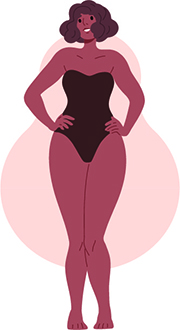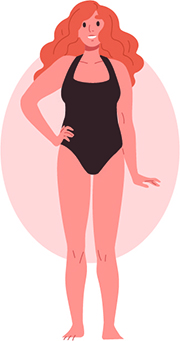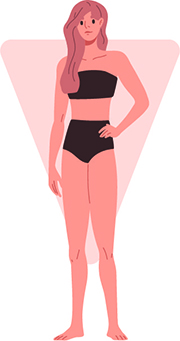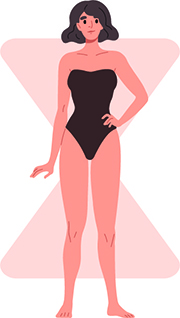International sewing patterns
International
sewing patterns
No language barrier · 9.500 patterns from 37 countries · incl. translation help
No language barrier · incl. translation help
9.500 patterns from 37 countries
Silk fabric
Silk production and history
Most silk fabric is made from natural fiber of the cocoons of the silk moth or also called mulberry silkworm. The silkworm is a larva of the silk moth. To pupate, the silkworm produces a white thread. Before completing metamorphosis, the pupa is killed by heating it up in hot water. When boiling water is poured onto the cocoon, the silk bast dissolves and the silk thread can then be pulled out. The process of obtaining and processing the precious thread is very expensive and time consuming. That is why the cost of silk is so high. For 250gr of silk fabric you need approximately 3000 cocoon shells.
Another type of silk is wild silk which is produced by the butterfly night peacock and obtained after the moth has hatched. It is more irregular and thicker than the usual silk. Furthermore it's silk yarns contain embedded color pigments, which give the fabric a certain shimmer.
Silk fabrics are said to have been known in China for about 5000 years but supposedly its production was a secret held by the Chinese empress which is why silk was very valuable in Europe as it could not be produced there. In the 6th century A.D. two monks (at least that is what the most famous story says) managed to smuggle the eggs of the silk moth into the Mediterranean. Since then, Italy has become the center of European silk production. The cities of Venice and Lucca, for example, are considered centers of silk production.
What are the properties of the material?
Silk fabrics are super expensive but not only because their production is complicated. The fabric also has very special properties. The luxurious fabric leaves a very good feel on the skin. Silk fabrics are very soft and cuddly. In addition, there is hardly any fabric that falls as beautifully and flowingly as silk and also shimmers in such a nice way which is why garments made out of silk look very special and chic. Furthermore, silk dries very quickly, is tear-resistant and hardly wrinkles and even has a temperature regulating effect. Silk fabrics can protect against both heat and cold. Therefore, they are perfect for clothing both in summer and winter. In addition, the material can absorb up to 30% of the skin's moisture without actually feeling damp and releases it again through evaporation.
The different types of silk
There are different types of silk fabrics that differ regarding their production.
Reel silk is that silk in which a single thread is obtained from the pupa of the mulberry moth by pulling it out with one pull. Sometimes it's also called mulberry silk fabric. The thread is pure, so it can be dyed very easily. It has good tensile strength which makes it one of the best silk fabrics. In addition, the thread of the reel silk has a very smooth surface, which gives it a special luster.
Snap silk is obtained from the remnants of the already unreeled cocoon. Since silk production is so complicated, one wants to minimize the amount of waste produced. Therefore, one tries not to lose any usable remnants from the cocoons by combing. Threads are combed several times and then cleaned and sorted. Waste that can be reused includes, for example, threads that caterpillars spin around their cocoons as supports. Snap silk is soft and has a slight sheen.
Bourette silk is made from cocoon remnants and very short threads. ItThis silk has small nodules which gives it a rough texture. It cannot be completely free from the silk glue and so has a characteristic smell. It doesn't go away even after washing. The silk glue has an anti-inflammatory effect and is generally very skin-friendly. Therefore, bourette silk is especially popular for baby products such as blankets and diapers.
Silk dupioni is a special type of mulberry silk. It is obtained from two cocoons where two caterpillars have met and pupated together. Dupioni silk is usually processed together with pure silk and is similar to real silk. However, it is more irregular in its structure and has a very high luster.
Depending on the type of weaving or knitting, the various types of silk differ slightly. Silk types include organza silk, silk chiffon, silk satin, and silk jersey.
Organza silk is a transparent and very fine silk fabric which is also a bit iridescent.
Silk satin is woven in the atlas weave leaving that one side is very shiny and the other side of the fabric is matte. Satin is also very soft and smooth.
Silk chiffon is made from crepe yarn and has a sandy feel. Chiffon is very fine and a bit sheer.
Unlike other silk fabrics, silk jersey is not woven, but knitted which is why the fabric ends up being elastic.
Uses of silk fabric
Silk fabrics are preferably used in the fashion industry and are perfect for chic clothing like blouses or dresses. It is especially popular for producing wedding dresses. But also high-quality nightwear and underwear is often made of silk
Silk has also been used in interiors for example to make pillow cases or curtains. Bedding made out of silk creates a very good sleeping climate.
Sewing tips
Silk fabrics are not so easy to work with but with a few tips you can surely have a good sewing project! Always clean your hands before working with silk, because stains from silk fabrics are difficult to remove. You should also pre-wash your fabric by hand, as it might shrink a bit.
When cutting your fabric use good and sharp scissors and maybe put a sheet underneath to prevent slipping.
Conventional pins can leave holes in silk fabrics which is why you should use weights or really fine pins.
Make sure that the thread tension and stitch length are right and that your fabric does not warp or show large holes in the sewing needle. Most of the time you can sew silk with a universal needle in 70 or 80. If you need a finer needle, special microtex needles are well suited.
How to wash silk fabric
Silk is an extremely delicate fabric and stains can be difficult to remove. Try to always wash the fabric by hand with quite a low temperature. Also use a mild detergent or even a special silk detergent.
Do not wring silk out or put it in the dryer to dry. Just hang the fabric up to dry or lay it on a towel in the correct shape. Excessive exposure to sunlight can cause silk to yellow which is why you should not let in dry in the sun.
Ou can iron your silk with low temperature and when its slightly damp.
Buy silk fabrics by the meter
You can buy beautiful and high-quality silk fabrics by the meter from us online or directly in the store. As already mentioned, the price per meter for silk is rather high but you'll also have a very special fabric for your next project. We have a great variety of silk fabric in various colors and patterns.
90% PDF or Freebooks - immediately available
Categories
Filter selection
What is my body shape?

Pear
- Narrow shoulders
- Slim waist
- Strong hips/ thighs
- Round bottom

Rectangle
- Slim, straight stature
- Small bust
- Straight waist
- Small bottom

Round
- Large bust
- Pronounced body center
- Strong thighs
- Slim legs

Inverted triangle
- Broad shoulders
- Medium to large bust
- Rather straight waist
- Slim legs

Hourglass
- Narrow shoulders
- Slim waist
- Stong hips/ thighs
- Round bottom
Silk fabrics
Pure silk is one of the most expensive and luxurious fabrics available, because it is really complicated to extract the silk fiber. In the following text we gathered some interesting information about silk.
more seen below...
Welcher Körper-Typ bist Du?

A-Typ - Birne
- Schultern schmal
- Taille schlank
- Hüften/ Oberschenkel kräftig
- Po rund

H-Typ - Banane
- Statur schlank, gerade
- Oberweite klein
- Taille gerade
- Po klein

O-Typ - Orange
- Oberweite groß
- Körpermitte ausgeprägt
- Hüften kräftig
- Beine schlank

V-Typ - Apfel
- Schultern breit
- Oberweite mittel bis groß
- Taille wenig ausgeprägt
- Beine schlank

X-Typ - Sanduhr
- Schulter + Hüfte ähnlich breit
- Oberweite groß
- Taille schlank
- Po rund



